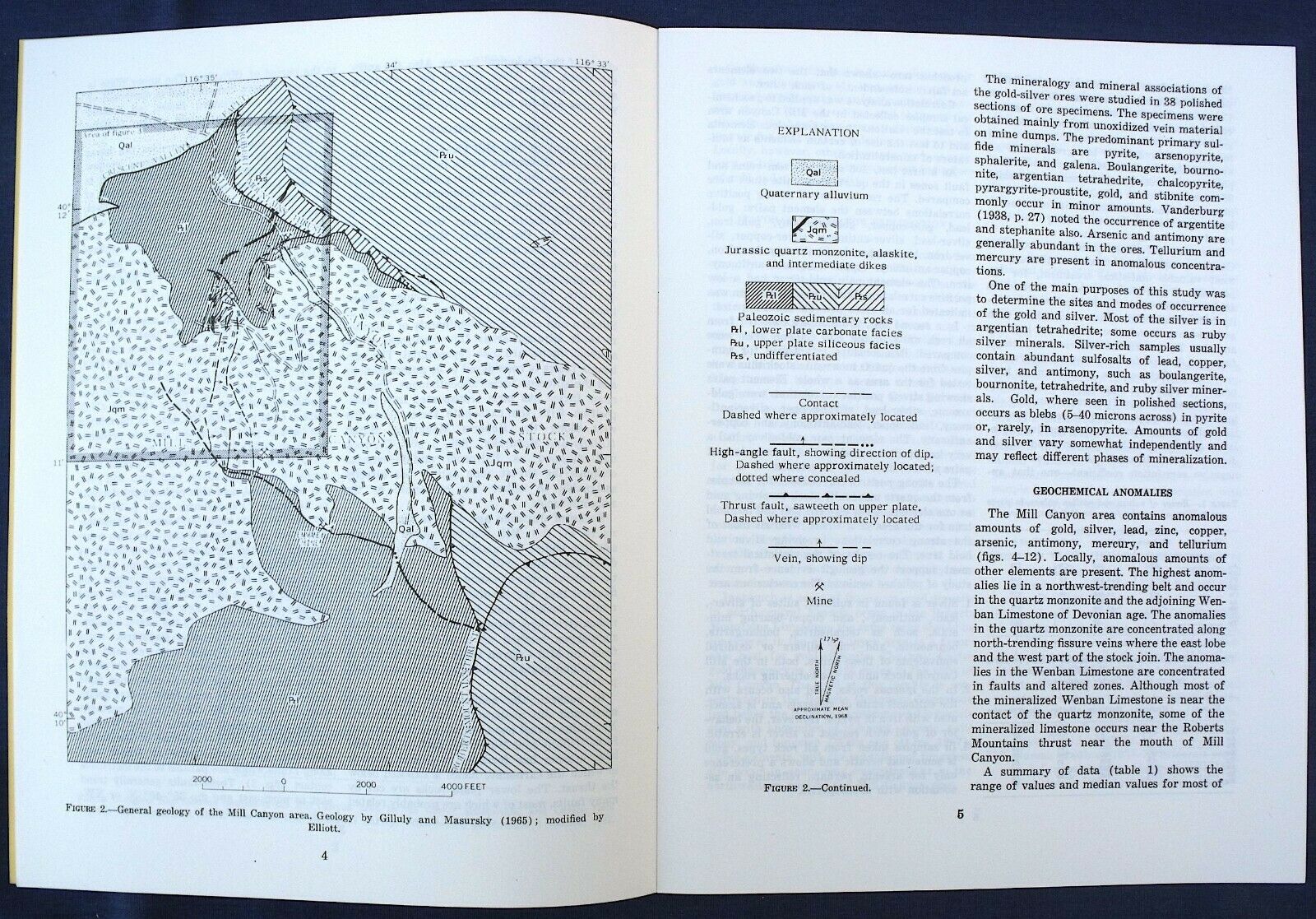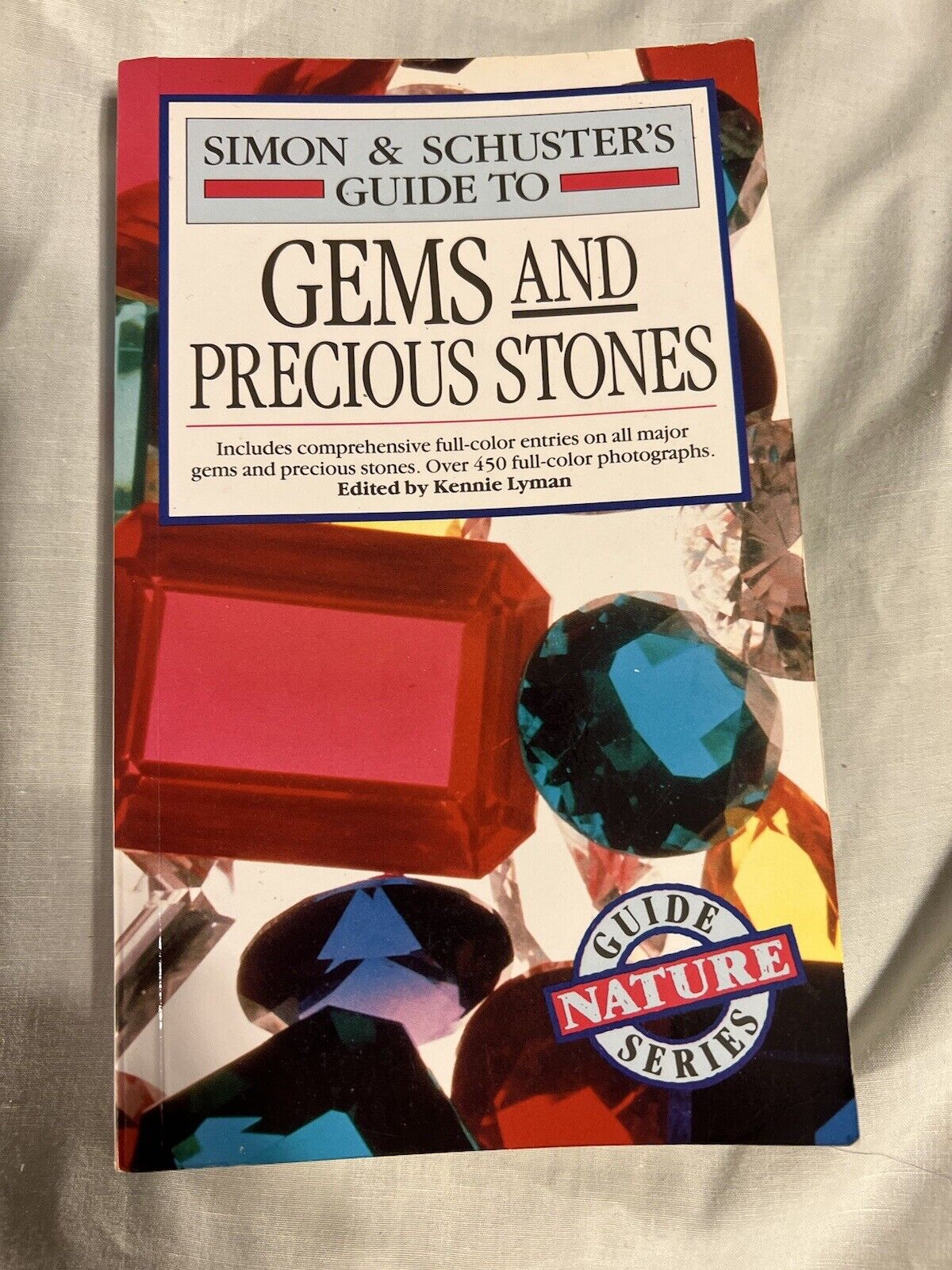-40%
USGS NEVADA GOLD EXPLORATION Lot of 7 Reports, 1966-68 Also Barite & More!
$ 6.33
- Description
- Size Guide
Description
ALL SCARCE ITEMS!!Here is a lot of seven reports on gold and exploration and related subjects in Nevada. All for one low price!
USGS Circular 534,
Gold Geochemical Anomaly in the Cortez District, Nevada
. Published in 1966, there can’t be many of these around. This short booklet discusses a gold anomaly that was discovered in an area already known for nearby gold mines. The Cortez District has produced millions of ounces of gold in its history and is still producing today. Exploration continues to this day, with the recent multimillion ounce Cortez Hills mine only one of the most recent major discoveries there. This publication is an essential part of the literature on this major gold district, and has tremendous relevance today as exploration continues to increase due to high gold prices. This area is part of the highly prospective Battle Mountain-Cortez-Eureka Trend, a gold-producing belt that is second in importance for total gold production to the Carlin trend.
USGS Circular 549,
Economic Significance of Revised Age Relations of Rocks in the Cornucopia Mining District, Elko County, Nevada.
Published in 1967. This short book discusses the geology of this mining district and how a new understanding of the geology of the area has resulted in an increase in the potential of the area to conceal valuable mineral deposits. This mining district contains several mines, including:
Cornucopia Mine (Leopard claim)
Gold-silver prospect (INM; SF; Wild Horse; Shirley claims)
Leonard mine
Panther Mine (Eagle Mine; Little Mine; Oz Mine; Paw claims)
Silver-gold prospect (Jasper claims; Bob claims)
And many other prospects!
List Courtesy of Mindat.org
The mines and prospects of this area have produced an interesting variety of mineral as well, including:
Acanthite
Chlorargyrite
Cronstedtite
Galena
Gold
Limonite
Nacrite
Pyrargyrite
Pyrite
Pyromorphite
Quartz
Siderite
Sphalerite
Stibnite
Tetrahedrite
(This list courtesy of Mindat.org. Does not mean the minerals are discussed within the text, but reflects the mineralogical richness of the area.)
USGS Circular 555,
Bedded Barite in East Northumberland Canyon, Nye County, Nevada.
Published in 1967. This short 8-page booklet discusses a barite deposit in the Central Nevada Barite province that was not previously recognized. I don’t know if there are nice barite crystals here, but it seems like it would be a good place to check, so as a mineral collecting guide this might be a great addition to your library. Perfect for planning your next desert ramble!
USGS Circular 596,
Preliminary Results of Geological, Geochemical, and Geophysical Studies in Part of the Virginia City Quadrangle, Nevada.
Published in 1968. This 20-page book discusses the implications of several lines of research as far as regards the existence of silver deposits in the area. This area was home to the famous Comstock Lode that put Virginia City on the map and earned Nevada its name as “The Silver State.” This publication examines the geology of two areas near the Comstock Lode. There are several maps and diagrams showing results of the sampling and geophysical studies. There is ample evidence of some sort of mineralizing system in these areas. All in all this is an especially scarce publication on the Comstock area.
This is USGS Circular 606,
Anomalous Concentrations of Gold, Silver, and other Metals in the Mill Canyon Area, Cortez Quadrangle, Eureka and Lander Counties, Nevada
. Published in 1968, there can’t be many of these around. This 20-page booklet discusses a various metal anomalies that were discovered in an area already known for nearby gold mines. The Cortez District has produced millions of ounces of gold in its history and is still producing today. Exploration continues to this day, with the recent 7+ million ounce Cortez Hills discovery only the most recent major discovery there. This publication is an essential part of the literature on this major gold district, and has tremendous relevance today as exploration continues to increase due to high gold prices. This area is part of the highly prospective Battle Mountain-Cortez-Eureka Trend, a gold-producing belt that is second in importance for total gold production to the Carlin trend.
USGS Circular 544,
Determination of Gold in Geologic Materials by Solvent Extraction and Atomic Absorption Spectrometry
. This is another booklet that discusses a key component that helped in the advancement of gold exploration. 6 pages, 1967.
USGS Circular 540,
A Simple Mercury Vapor Detector for Geochemical Prospecting
. Published in 1967, this instrument design came out of the USGS Heavy Minerals Investigations program, and was developed in order to provide a quick, cost-effective way to analyse geologic samples for mercury. Mercury is important in minerals exploration because of its presence as a “pathfinder element” in many deposits, especially gold deposits. This instrument is probably outdated by advances in analytical chemistry but this book still provides an interesting look at the exploration practices used in the past. This is a 1971 third printing of this 1967 book. 8 pages.
Expert packing assured. The recent increase in postage rates was pretty big. As a result, Media Mail is now my default shipping method to keep shipping affordable.
Visit my store,
Rockwiler Books and Minerals.
I will continue to add items to my store, so check back frequently.
®
ROCKWILER


















